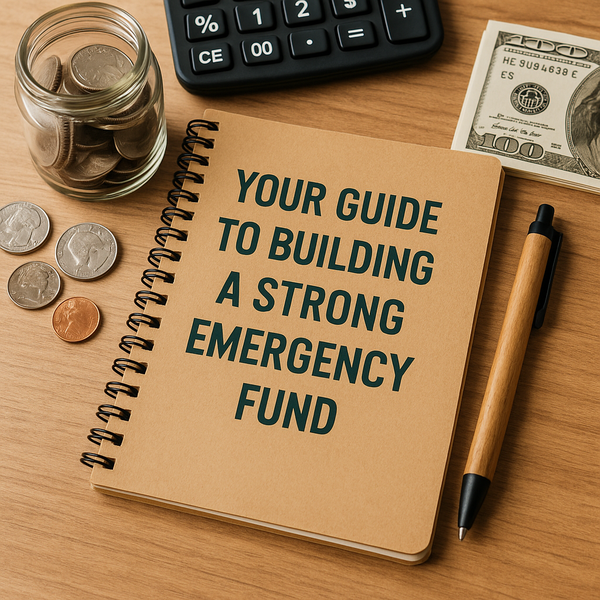
Navigating the complexities of personal finance often feels daunting, but one fundamental step can significantly boost your financial security: building an emergency fund. This crucial savings cushion acts as your first line of defense against life's inevitable curveballs, preventing unexpected expenses from derailing your financial goals and providing much-needed peace of mind.
Why is an Emergency Fund Essential?
Life is full of surprises, and not all of them are pleasant. Unexpected events like job loss, medical emergencies, car repairs, or sudden home maintenance issues can strike at any time. Without readily available funds, you might be forced to rely on high-interest credit cards, take out expensive loans, or even dip into long-term savings earmarked for retirement or education. An emergency fund prevents this by providing liquid cash to cover these unexpected costs, allowing you to handle crises without creating long-term financial damage.
How Much Should You Save?
The traditional recommendation is to save enough to cover 3 to 6 months' worth of essential living expenses. Essential expenses include things like housing (rent or mortgage), utilities, food, transportation, insurance premiums, and minimum debt payments. The exact amount you need depends on your personal circumstances, including job stability, number of dependents, and the predictability of your income. If you have a less stable job or a family to support, aiming for the higher end (6+ months) is often advisable. Calculate your monthly essential expenses and multiply that number by 3, 6, or even 9 or 12 to set your savings target.
Where Should You Keep Your Emergency Fund?
The primary characteristics of an emergency fund location are safety and accessibility (liquidity). The money needs to be readily available when you need it, but also secure from market fluctuations or everyday temptation. The best place is typically a separate savings account, ideally one that is easily accessible but not linked to your primary checking account for spending. High-yield savings accounts, money market accounts, or even short-term Certificates of Deposit (CDs) (if you can access funds penalty-free in an emergency) are good options. Avoid investing your emergency fund in stocks, bonds, or mutual funds, as the value can fluctuate significantly, and you might need the money when the market is down.
Strategies for Building Your Fund
Building a substantial emergency fund takes time and discipline, but it's achievable with a clear plan. Start by calculating your target amount. Next, determine how much you can realistically save each month. Treat your emergency fund contributions like a non-negotiable bill. Set up automatic transfers from your checking account to your dedicated savings account on payday. This ensures consistent progress and removes the temptation to spend the money elsewhere.
Finding Money to Save
If you're struggling to find room in your budget to save, start by tracking your spending for a month or two. Identify areas where you can cut back, even temporarily. This could involve reducing discretionary spending on entertainment, dining out, or subscriptions. Consider taking on a side hustle or selling unneeded items to boost your savings efforts initially. Every little bit helps, and seeing your savings grow can be a powerful motivator.
What Qualifies as an Emergency?
It's crucial to define what constitutes a true emergency versus a non-essential expense. An emergency is an unexpected, necessary expense that you cannot otherwise cover. Examples include losing your job, needing immediate medical treatment, essential car repairs to get to work, or emergency home repairs (like a leaking roof). It is NOT for things like impulse buys, vacations, holiday shopping, or upgrading your electronics. Using your emergency fund for non-emergencies defeats its purpose and leaves you vulnerable when a real crisis occurs.
Maintaining Your Emergency Fund
Once you've reached your savings goal, your work isn't entirely done. Your emergency fund is a living entity. If you use funds for a legitimate emergency, make replenishing it a top financial priority. Periodically review your essential expenses to ensure your target amount is still adequate, especially if your living situation or income changes. Keep the fund in a place where it can earn a little interest to combat inflation, while maintaining accessibility.
Peace of Mind and Financial Resilience
Beyond the financial protection, having a fully funded emergency cushion provides invaluable peace of mind. Knowing you can handle unexpected challenges without going into debt or derailing your financial future reduces stress and anxiety. It builds financial resilience, giving you the stability to pursue other financial goals like investing or saving for a down payment. Starting small and being consistent is the key to building this essential financial foundation.
Building an emergency fund is a foundational step towards financial security. It requires planning, discipline, and smart saving habits, but the peace of mind and protection it offers are well worth the effort. By defining your goal, finding the right place to save, and implementing consistent saving strategies, you can create a robust financial safety net for whatever life throws your way.

